 March 12, 2020 John E. Ross, KD8IDJ, Editor
| ||||||
Visalia International DX Convention, Other Events, Canceled Due to Coronavirus Concerns Concern over COVID-19 has led to the cancellation of the 2020 International DX Convention (IDXC) and of several other amateur radio-related events here and abroad. The IDXC was to be held April 24 - 26 in Visalia, California. "We send out our apologies to all our prospective patrons of the 2020 International DX Convention," IDXC Co-chairs Cathy Gardenias, K6VC, and Kris Jacob, K6TOD, said on behalf of the convention committee. "Due to concerns, health and well-being of our amateur radio family, our age group, and possible compromised health issues, we are taking the side of safety and canceling the convention." On March 11, the Dayton Hamvention® Executive Committee, said, "As of now we plan on holding Hamvention unless otherwise directed. It is our intention to follow the orders of the State of Ohio and the Greene County Health Department." On March 12, Ohio Governor Mike DeWine issued an executive order barring public participation in sporting events and other large gatherings (defined as 100 or more attendees). Ohio has reported four confirmed COVID-19 cases. An in-person version of the HamSCI workshop, set for March 20 - 21 at the University of Scranton, has been canceled because of the coronavirus situation. HamSCI's Nathaniel Frissell, W2NAF, who's organizing the event, said alternative plans are in play to hold a virtual workshop. The Gulf Coast Amateur Radio Club Spring Hamfest on March 14 and the Great Lakes Convention on March and the March 15 Toledo Hamfest in Ohio have been canceled. Also canceled: Communications Academy 2020, due to be held in Seattle, Washington, April 24 - 26. ARRL has created a URL that will search the ARRL Hamfest and Convention Database for canceled events. FCC Headquarters has barred the door to visitors, employees, and contractors who have been in any country subject to a COVID-19-related CDC Level 3 Travel Warning. It also has suspended until further notice any FCC involvement in large, non-critical gatherings involving national or international participants. Read more. Nominations Invited for 2020 McGan Silver Antenna Award for Excellence in Public Relations The ARRL Public Relations Committee invites nominations for the Philip J. McGan Memorial Silver Antenna Award, presented annually to a radio amateur who has demonstrated success in public relations efforts on behalf of amateur radio and who best exemplifies the volunteer spirit of Philip McGan, WA2MBQ (SK). "ARRL Public Information Officers (PIOs) and other volunteers are working hard every day to create greater awareness of all that amateur radio has to offer," the Committee said in announcing the opening of nominations for the award. "They are publicizing special events, writing press releases, or doing interviews on radio and television or in newspapers to highlight the service that amateur radio provides."
Activities for which the McGan Award is presented include those specifically directed at bringing amateur radio to the media's and the public's attention in a positive light. This may include such traditional methods as news releases or interviews, or less traditional methods, such as hosting a radio show or being an active public speaker. The ARRL Board of Directors will choose the award winner at its July 2020 meeting, based on recommendations from the ARRL Public Relations Committee. The Committee has responsibility for reviewing the nominations and supporting material. Eligible nominees must be full ARRL members in good standing at the time of nomination. The award is given only to an individual, and nominees may not be current ARRL officers, directors, vice directors, paid staffers, or members of the ARRL Public Relations Committee. Nominees must not be compensated for any public relations work involving amateur radio -- including payment for articles. A nominee's efforts must fit the definition of public relations and recognize the promotion of amateur radio to the non-amateur radio community. Nominations must be received at ARRL Headquarters by the close of business on Friday, May 15, 2020. Nominations must be on an official entry form. Anyone may make a nomination. "Team Exuberance" Aims to Lower the Average Age of Contesters Seven of the world's top youth CW operators will convene at the western Pennsylvania superstation of Tim Duffy, K3LR, in late May, in an effort to lower the average age of contest operators -- especially CW operators. "Team Exuberance (TE)," comprised of teens and early 20-somethings, gained a reputation during the CQ WPX phone event in 2019. This year, they will tackle the CQ WPX CW contest on May 30 - 31. The young operators have been raising money to minimize the cost of the adventure for the participants and their families. "The average age of today's CW operator is 67," the group asserted. "Team Exuberance CW 2020 (TE CW 2020) is out once again to take a swing at the radiosport establishment, disprove the adage that old
age and treachery will always beat youth and exuberance, and bring down the average age of the contesting community." They also want to prove "that youth contesters are legit contenders" in the radiosport arena. Violetta Latham, KK8AT, led the first Team Exuberance contest operation, which took first place in North America in the Multi-Two category, racking up a score of 22 million points and logging 5,700 contacts. The team will stick to the Multi-Two format for the WPX CW this year. The TE CW 2020 team will include David Samu, VE7DZO; Marty Sullaway, NN1C; Philipp Springer, DK6SP; Bruce Yang, KN8U/BH4EPL; Tomi Varro, HA8RT; Mathias Acevedo, CE2LR, and Bryant Rascoll, KG5HVO. The team has mounted a GoFundMe campaign to raise the projected $8,000 necessary to cover airfare, hotel, transportation, and meals for the duration of the contest. Any excess funds will be donated to the David Kalter Youth DX Adventure. "Your donation will not only help our team achieve the goal of participating in the CQ WPX CW 2020 but also keep the momentum of bringing more youth into the hobby and ultimately bring down the average age," the team said in its pitch. TE CW 2020 says its operators were handpicked for this contest and are all highly skilled and experienced. Varro, who is 21, was the 2014 High-Speed Telegraphy (HST) competition champion, while Yang, also 21 and a student at Georgia Tech, was the World Rookie champion for the 2019 CQ WPX CW event. "While amateur radio is not a mainstream hobby for today's youth, finding skilled youth CW operators is even rarer," TE CW 2020 said in a news release. "They do [CW] because it's fun and challenging." ARRL Podcasts Schedule
Both podcasts are available on iTunes (iOS) and Stitcher (Android) as well as on Blubrry -- On the Air | Eclectic Tech. Outer Space is Your Next Radio Frontier! You can make contacts through amateur radio satellites, and even with the International Space Station, using equipment you probably own right now! All it takes is the right information, which you'll find in ARRL's new book, Amateur Radio Satellites for Beginners. Dozens of spacecraft are in orbit just waiting for your signals, and more are being launched every year. This book is your guide to a "Even with just a dual-band FM transceiver and a mobile antenna, you can make contacts through an amateur satellite!" said ARRL author and QST Editor Steve Ford, WB8IMY. Building amateur radio satellites is difficult; communicating through amateur satellites is not. Amateur Radio Satellites for Beginners will introduce you to new experiences that you may have thought were out of your reach. Start reading and discover how easy it can be! Amateur Radio Satellites for Beginners is available from the ARRL Store or your ARRL Dealer. ARRL Item no. 1304, ISBN: 978-1-62595-130-4, $22.95 retail, special ARRL Member Price $19.95. Call 860-594-0355 or, toll-free in the US, 888-277-5289. It will also be available as an e-book for the Amazon Kindle. The K7RA Solar Update Tad Cook, K7RA, Seattle, reports: I felt cheated this week when a much-anticipated sunspot appeared only briefly, and after 2 days was gone. Sunspot region AR2758 only appeared on March 8 - 9, with daily sunspot numbers of 13 and 12, respectively. Some new activity is visible over the solar horizon -- a very active and bright spot, but this time in the sun's northern hemisphere.
Predicted solar flux over the next 45 days is 71 on March 12 - 14; 70 on March 15 - 18; 72 on March 19 - 22; 70 on March 23 - April 4; 72 on April 5 - 18, and 70 on April 19 - 25. Predicted planetary A index is 5 on March 12 - 18; 12 and 8 on March 19 - 20; 5 on March 21 - 26; 12 and 8 on March 27 - 28; 5 on March 29 - April 5; 10 and 8 on April 6 - 7; 5 on April 8 - 13; 8, 12, and 8 on April 14 - 16; 5 on April 17 - 22, and 12, 8, and 5 on April 23 - 25. Sunspot numbers for March 5 - 11 were 0, 0, 0, 13, 12, 0, and 0, with a mean of 3.6. The 10.7-centimeter flux was 69.5, 70, 69.9, 70.2, 70.8, 70.8, and 70.5, with a mean of 70.2. Estimated planetary A indices were 4, 5, 5, 5, 5, 4, and 3, with a mean of 4.4. Middle latitude A index was 3, 4, 5, 3, 5, 3, and 2, with a mean of 3.6. A comprehensive K7RA Solar Update is posted Fridays on the ARRL website. For more information concerning radio propagation, visit the ARRL Technical Information Service, read "What the Numbers Mean...," and check out K9LA's Propagation Page. A propagation bulletin archive is available. Monthly charts offer propagation projections between the US and a dozen DX locations. Share your reports and observations. Just Ahead in Radiosport
See the ARRL Contest Calendar for more information. For in-depth reporting on amateur radio contesting, subscribe to The ARRL Contest Update via your ARRL member profile email preferences. ARISS Celebrates Successful Launch Carrying Interoperable Radio System to ISS Amateur Radio on the International Space Station (ARISS) is celebrating the successful launch and docking of the SpaceX-20 commercial resupply mission to the International Space Station (ISS). One payload on the flight is the ARISS Interoperable Radio System (IORS), which ARISS calls "the foundational element of the ARISS next-generation radio system" on the space station. Amateur radio has "ARISS is truly grateful to ARRL and AMSAT for their co-sponsorship and support of ARISS since day one," White said. "ARISS greatly appreciates the hundreds of ham radio operators who have stood by ARISS, sending financial support and encouragement. A robust ham station is on its way to replace the broken radio on the ISS, and tens of thousands of hams will enjoy strong ARISS packet and ARISS SSTV signals as a result. In addition, thousands of students will discover and use ham radio to talk with a ham-astronaut. We hope to see the trend continue where more ARISS teachers and local clubs set up school ham clubs." The new system includes a higher-power radio, an enhanced voice repeater, updated digital packet radio (APRS), and slow-scan television (SSTV) capabilities for both the US and Russian space station segments. White called the March 7 launch, "beautiful, flawless." ARRL President Rick Roderick, K5UR, told ARISS that he had his fingers crossed for a successful launch. According to NASA Mission Control, it will take the three ISS crew members up to a month to unload and stow the 4,300 pounds of cargo The IORS consists of a custom-modified JVCKenwood TM-D710GA transceiver, a multi-voltage power supply, and interconnecting cables. The ARISS hardware team will assemble four flight units -- and 10 IORS units in all -- to support onboard flight operations, training, operations planning, and hardware testing. Future upgrades and enhancements to the next-generation system are in various stages of design and development. These include a repaired Ham Video system -- currently planned for launch in mid-to-late 2020, an L-band (uplink) repeater, a microwave "Ham Communicator," and Lunar Gateway prototype experiment. International Group Reactivating the Legendary Yasme VP2VB Call Sign On Tuesday, March 10, an international group set sail to the British Virgin Islands and activated the VP2VB call sign of Yasme fame for 6 days, focusing on the low bands with two stations. VP2VB was the call sign of the legendary Danny Weil, VP2VB, skipper of the Yasme series of sailing vessels that carried the peripatetic adventurer as he traveled from one DX location to another in the 1950s and early 1960s. His activities A Briton, Weil was a watch and clock maker by trade, and had a sense of adventure. His initial Yasme (often rendered as YASME) sailing voyage was to the British Virgin Islands. Yasme derives from the Japanese word "yasume," which means "to make tranquil." Another giant of ham radio history, the legendary DXer Dick Spencely, KV4AA, became aware of Weil's aspirations and suggested that he combine amateur radio with his ambitious travel itinerary. Spencely taught Weil Morse code and helped him secure the VP2VB call sign, which was to become famous around the globe. Spencely secured the initial ham Ultimately, there were three Yasmes. From 1955 until 1962, Weil operated from several ports of call in the Caribbean and the Pacific. This latter-day VP2VB DXpedition will count toward Yasme awards and marks the first activation of VP2VB in more than 60 years. This month's VP2VB DXpedition will trace Weil's original route in the British Virgin Islands under a special license authorization, to pay homage to those early years of DXing and to honor the spirit he embraced, which inspired a generation of DXers. Weil retired from DXpeditioning and settled in Texas in 1963, resuming his profession of a watch and clock maker and becoming a US citizen. He was not to be heard on the air again -- although he kept an ear on the bands. Weil died in 2003 at age 85. In Brief...
Upcoming ARRL Section, State, and Division Conventions
Find conventions and hamfests in your area.
. .
Subscribe to...
Free of charge to ARRL members...
| ||||||
.jpg) They conceded that, although the number of COVID-19 cases remains low, it only takes one person to pass the virus. IDXC is processing refunds.
They conceded that, although the number of COVID-19 cases remains low, it only takes one person to pass the virus. IDXC is processing refunds. A journalist, McGan was the first chairman of ARRL's Public Relations Committee, which helped reinvigorate ARRL's commitment to public relations. To honor McGan, members of the New Hampshire Amateur Radio Association joined with the ARRL Board of Directors to establish an award that would pay lasting tribute to the important contributions he made on behalf of amateur radio.
A journalist, McGan was the first chairman of ARRL's Public Relations Committee, which helped reinvigorate ARRL's commitment to public relations. To honor McGan, members of the New Hampshire Amateur Radio Association joined with the ARRL Board of Directors to establish an award that would pay lasting tribute to the important contributions he made on behalf of amateur radio.-labeled.jpg)
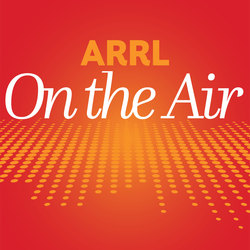 The latest (March 12) episode of the On the Air podcast focuses on how to calculate feed line loss, real-world examples of how digital and analog FM transceivers handle weak signals, and an interview with Rob Macedo, KD1CY, Eastern Massachusetts ARES Section Emergency Coordinator and SKYWARN Coordinator for the National Weather Service Boston/Norton office. Rob will offer information about how hams can get involved with SKYWARN.
The latest (March 12) episode of the On the Air podcast focuses on how to calculate feed line loss, real-world examples of how digital and analog FM transceivers handle weak signals, and an interview with Rob Macedo, KD1CY, Eastern Massachusetts ARES Section Emergency Coordinator and SKYWARN Coordinator for the National Weather Service Boston/Norton office. Rob will offer information about how hams can get involved with SKYWARN.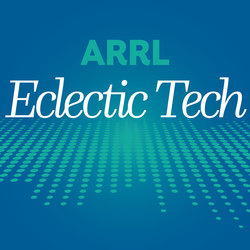 The latest episode of the Eclectic Tech podcast (Episode 3) includes an interview with JS8Call creator Jason Sherer, KN4CRD, revisiting SSTV, and a discussion of arc-fault circuit breakers with Bob Allison, WB1GCM.
The latest episode of the Eclectic Tech podcast (Episode 3) includes an interview with JS8Call creator Jason Sherer, KN4CRD, revisiting SSTV, and a discussion of arc-fault circuit breakers with Bob Allison, WB1GCM.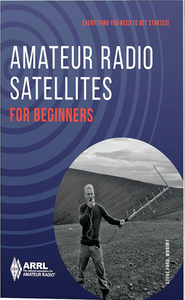 whole new world of operating enjoyment. Inside you will be able to locate satellites and determine when they will be available in orbit, gain tips for building your own "satellite station, find a simple step-by-step guide to making your first contacts, and discover satellite antenna projects you can build at home.
whole new world of operating enjoyment. Inside you will be able to locate satellites and determine when they will be available in orbit, gain tips for building your own "satellite station, find a simple step-by-step guide to making your first contacts, and discover satellite antenna projects you can build at home.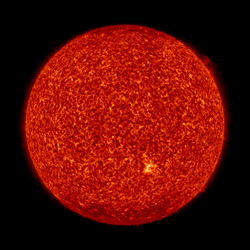 Average daily sunspot numbers for the week rose from zero to 3.6, while average daily solar flux barely increased, from 70 to 70.2. Average daily planetary A index declined from 6.7 to 4.4, and average middle latitude A index decreased from 4.6 to 3.6.
Average daily sunspot numbers for the week rose from zero to 3.6, while average daily solar flux barely increased, from 70 to 70.2. Average daily planetary A index declined from 6.7 to 4.4, and average middle latitude A index decreased from 4.6 to 3.6. been an integral component of ISS missions since 2000. The Dragon cargo capsule docked successfully with the space station on March 9. ARISS-US Delegate for ARRL Rosalie White, K1STO, said hundreds of ARRL members contributed to make the IORS project happen, and ARISS is celebrating the 4-year-long project.
been an integral component of ISS missions since 2000. The Dragon cargo capsule docked successfully with the space station on March 9. ARISS-US Delegate for ARRL Rosalie White, K1STO, said hundreds of ARRL members contributed to make the IORS project happen, and ARISS is celebrating the 4-year-long project.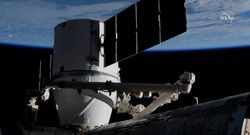 on board the Dragon capsule, and the IORS is not a priority. The actual ham equipment will be installed in the ISS Columbus module. Another IORS unit is in line to be launched and installed in the Russian segment of the ISS later this year.
on board the Dragon capsule, and the IORS is not a priority. The actual ham equipment will be installed in the ISS Columbus module. Another IORS unit is in line to be launched and installed in the Russian segment of the ISS later this year.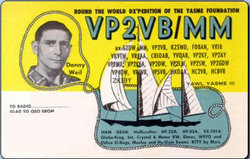 provided the impetus to create
provided the impetus to create 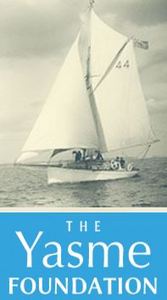 radio gear for the Yasme and became a tireless fundraiser for The Yasme Foundation as well.
radio gear for the Yasme and became a tireless fundraiser for The Yasme Foundation as well.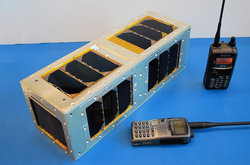 The launch of the
The launch of the 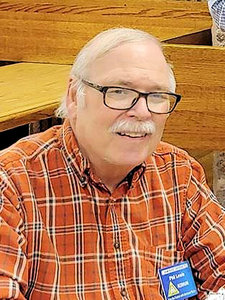 The founder of the annual
The founder of the annual 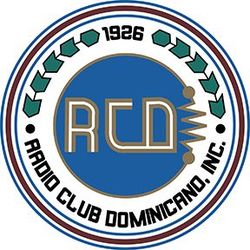 The Dominican Republic now has a 60-meter band. Following an Executive Branch vote, Dominican Republic telecommunications regulator Indotel has
The Dominican Republic now has a 60-meter band. Following an Executive Branch vote, Dominican Republic telecommunications regulator Indotel has 







